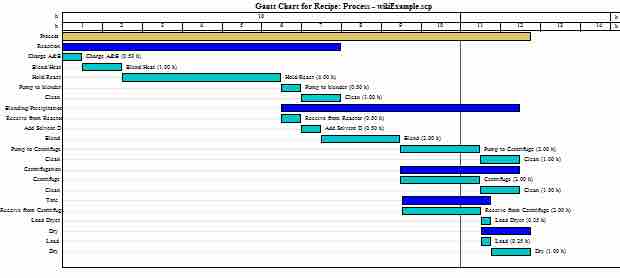Scheduling is an important tool in the manufacturing and engineering industries, where it can significantly impact the productivity of a particular process. In manufacturing, the purpose of scheduling is to minimize production time and cost by telling a production facility when to make a product and with which staff and equipment.
Production scheduling aims to maximize the efficiency of an operation and reduce its costs . Modern scheduling tools greatly outperform older, manual scheduling methods. Today's tools provide the production scheduler with powerful graphical interfaces, which can be used to visually optimize real time work loads in various stages of production. Further, pattern recognition software reveals scheduling opportunities that might not be apparent without this view into the data.

Scheduling Visualization
This Gantt chart aids in scheduling by visualizing and relating phases of production.
For example, in order to reduce costs, an airline may want to minimize the number of airport gates required for its aircraft. Scheduling software allows planners to see how this might be done, enabling them to analyze time tables, aircraft usage, or the flow of passengers.
Companies use backward and forward scheduling to allocate plant and machinery resources, determine human resources and production processes, and purchase materials. Forward scheduling involves planning tasks from the date that resources become available in order to determine the shipping date or the due date. Backward scheduling involves planning tasks from the due date or required-by date in order to determine the start date and/or necessary changes in capacity.
Production scheduling has a number of benefits:
- Process change-over reduction
- Inventory reduction and leveling
- Reduced scheduling effort
- Increased production efficiency
- Labor load leveling
- Accurate delivery date quotes
- Real time information
Finally, minute-by-minute production scheduling occurs for each manufacturing facility in the supply chain at the operational level of supply chain activities.